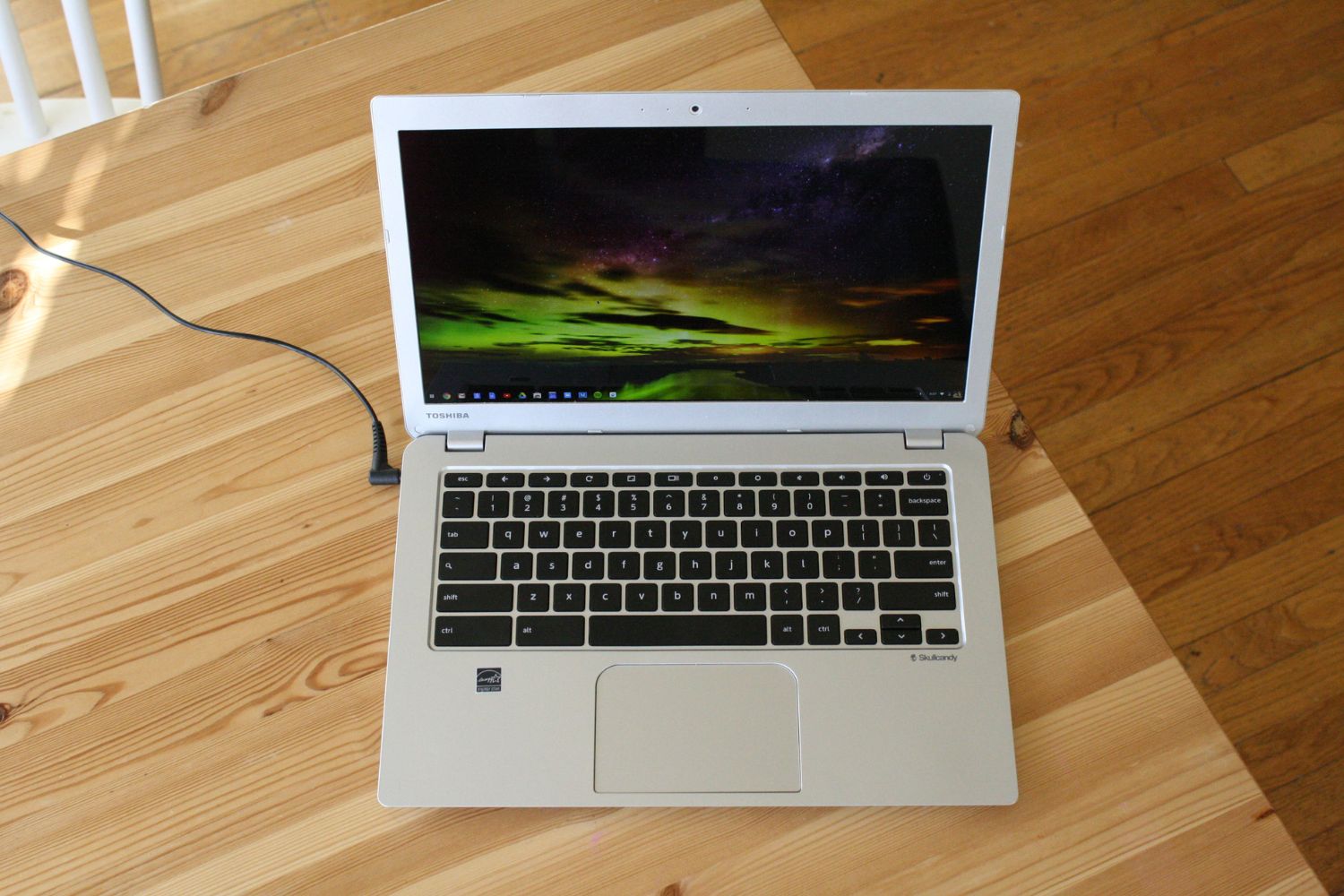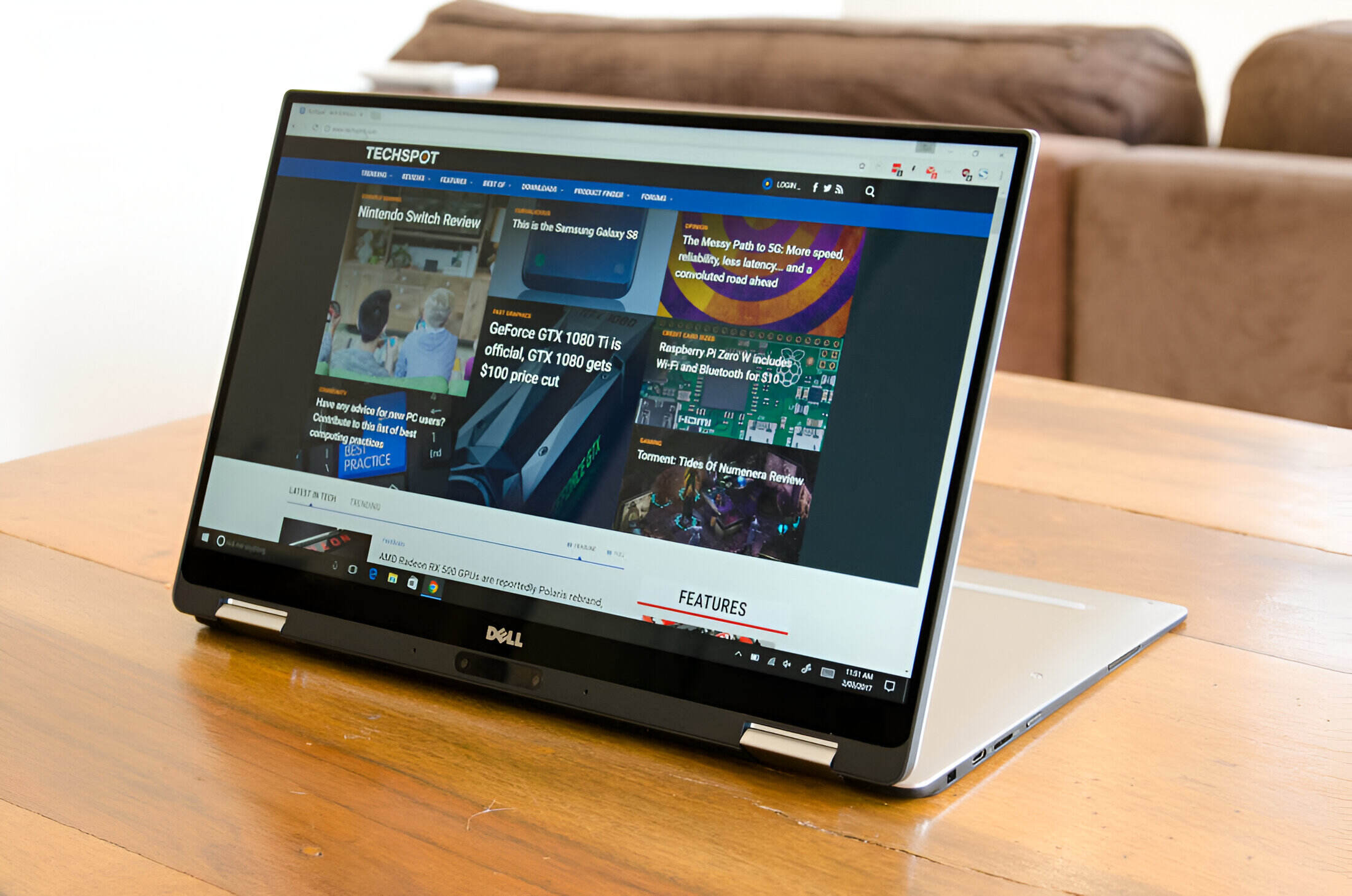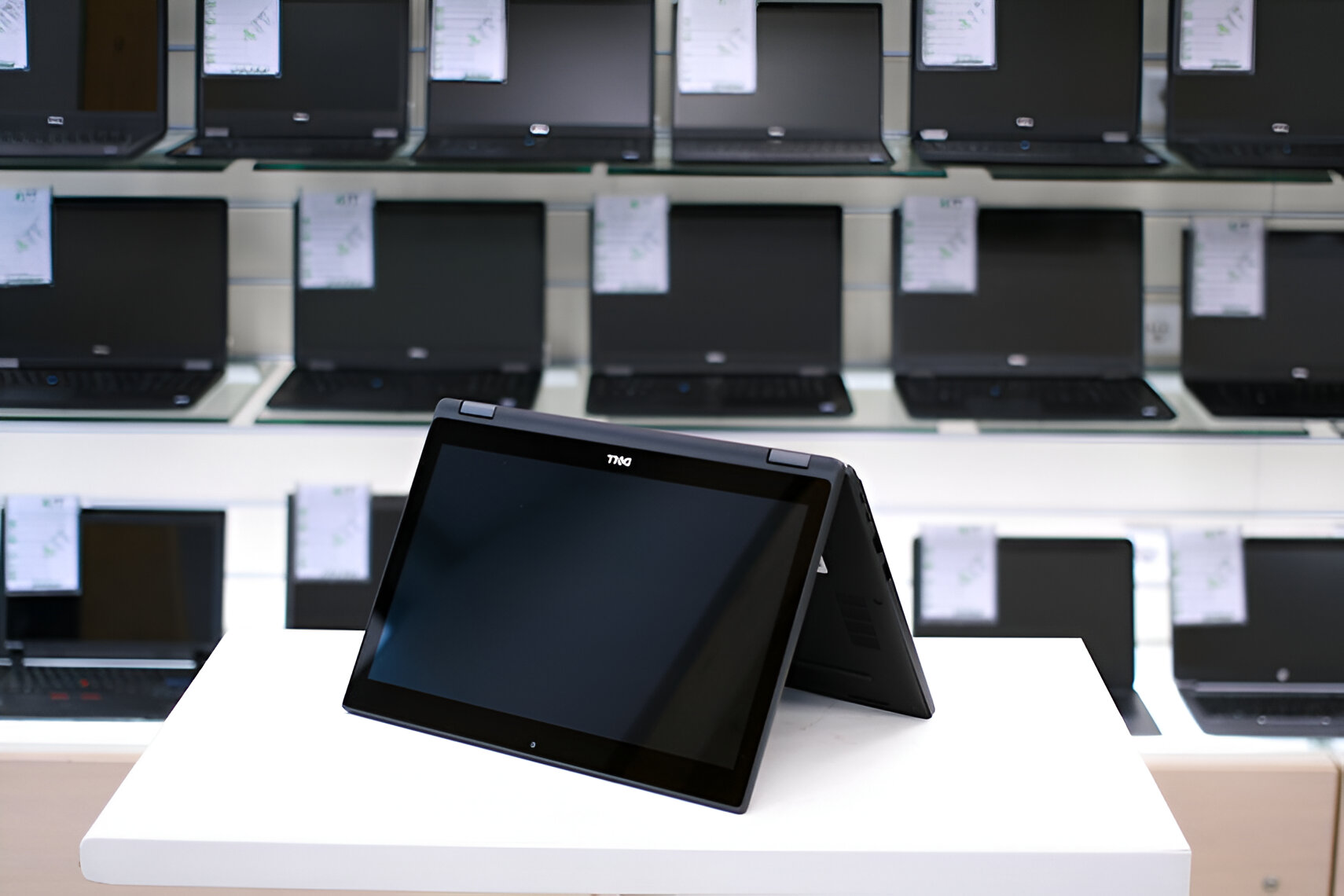Introduction
Welcome to the world of Dell Ultrabooks! These sleek and powerful laptops offer a seamless computing experience with their cutting-edge technology and innovative features. One of the standout features of Dell Ultrabooks is the function keys, a set of keys located at the top of the keyboard that provide quick access to various functions and controls.
In this article, we will explore the different function keys found on Dell Ultrabooks and their specific functionalities. Whether you are a seasoned user or new to the Dell Ultrabook family, understanding the function keys can greatly enhance your productivity and streamline your computing experience.
From adjusting screen brightness and volume to toggling wireless connectivity and controlling multimedia, the function keys on Dell Ultrabooks are designed to make your life easier. We will delve into each function key in detail, providing insights into their purpose and how to effectively utilize them.
So, if you are ready to unlock the full potential of your Dell Ultrabook and optimize your workflow, let’s dive into the world of function keys and discover the multitude of possibilities they offer.
Function Keys Overview
Function keys, often labeled as F1 to F12, are a set of keys located at the top of the keyboard on Dell Ultrabooks. These keys serve a specific purpose and can be customized to perform various functions, making them incredibly versatile and convenient.
By default, the function keys on Dell Ultrabooks are programmed to perform specific tasks, such as adjusting screen brightness, controlling volume, and toggling various features like Wi-Fi and touchpad. However, you can easily customize the function keys using the Dell Precision Touchpad settings or Dell ControlPoint application to suit your preferences and workflow.
Some Dell Ultrabooks also feature additional function keys with icons specific to the device, such as an airplane mode key or a battery percentage indicator key. These additional function keys provide quick access to commonly used settings and features, further enhancing the user experience.
It’s important to note that the function keys on Dell Ultrabooks may have different functionalities depending on the specific model and software configuration. Some function keys may require additional software or drivers to fully utilize their capabilities.
Now that we have a basic understanding of function keys on Dell Ultrabooks, let’s explore the specific functionalities of each key in detail. From assisting with everyday tasks to enhancing multimedia experiences, the function keys on Dell Ultrabooks have something to offer for every user.
F1: Help
The F1 function key on Dell Ultrabooks is a handy tool when you need assistance or guidance while using your device. Pressing the F1 key will bring up the Help menu, which provides access to a wealth of information and resources to help you troubleshoot issues, learn more about your Ultrabook’s features, and find answers to commonly asked questions.
Within the Help menu, you can navigate through different sections that cover various aspects of your Dell Ultrabook, including hardware, software, connectivity, and more. You can search for specific topics or browse through the different categories to find relevant information.
The Help menu may also include links to online resources, such as user manuals, support forums, and knowledge bases, where you can find in-depth information and solutions to common problems. It’s a valuable tool for both novice and experienced users, offering guidance and support whenever you need it.
Aside from accessing the Help menu, you can also utilize the F1 key in conjunction with other keys to perform certain actions. For example, pressing the Fn key along with F1 may activate specific functions, such as opening a web browser and directing it to the Dell support website or launching a pre-installed support application.
Overall, the F1 key on Dell Ultrabooks provides quick and easy access to a wealth of resources and assistance, ensuring that you have the support you need to make the most out of your device. Whether you’re troubleshooting an issue, seeking information, or looking for helpful tips, the F1 function key is your gateway to a world of guidance and support.
F2: Rename
The F2 function key on Dell Ultrabooks is a convenient shortcut for renaming files and folders. This key is particularly useful when you need to quickly modify the name of a document, image, or any other type of file.
To use the F2 key for renaming, simply select the file or folder you want to rename and press F2. The file or folder name will become editable, allowing you to make changes to it. You can then type in the new name and press Enter to save the changes.
Renaming files and folders is essential when you want to organize your data in a more efficient and meaningful way. Whether you want to give a more descriptive name to a document, add a date to a photo, or create a unique name for a project folder, the F2 function key makes the process quick and effortless.
In addition to the basic renaming functionality, the F2 key can also be combined with other keys to perform advanced actions. For example, pressing the Ctrl key along with F2 may open up a file properties dialog, allowing you to view and modify additional details about the file.
The F2 key can be especially handy when working with large numbers of files or when you need to quickly organize files within folders. Instead of manually right-clicking and selecting the rename option, the F2 key offers a faster and more convenient approach.
Whether you’re a student managing assignments, a professional organizing work files, or a creative individual organizing a media library, the F2 function key on Dell Ultrabooks simplifies the process of renaming files and folders, helping you maintain a well-structured and easily navigable digital environment.
F3: Search
The F3 function key on Dell Ultrabooks is a powerful tool for quickly searching for files, folders, and other content on your device. With a simple press of the F3 key, you can initiate a search function and easily locate specific items within your computer’s storage.
When you press the F3 key, a search box or bar will appear on your screen, allowing you to enter keywords or phrases related to the file or folder you are looking for. As you type, Dell Ultrabooks often provide real-time suggestions and autofill options to help you find what you need faster.
The search functionality of the F3 key extends beyond just file and folder names. It can also search within the content of files, including documents, emails, and even web pages. This makes it incredibly convenient when you need to locate specific information within a document without having to manually open each file.
In addition to search within your device’s storage, the F3 key can also be utilized to perform online searches. By default, Dell Ultrabooks may open a web browser and direct it to a search engine, allowing you to quickly find information on the internet.
Whether you’re trying to locate a specific document, search for a particular email, or find information on the web, the F3 function key on Dell Ultrabooks streamlines the process and saves you time and effort. Instead of manually navigating through folders or starting a web search from scratch, the F3 key provides instant access to powerful search capabilities.
With the F3 function key at your fingertips, you can effortlessly find the files and information you need, improving your productivity and making your computing experience more efficient.
F4: Refresh
The F4 function key on Dell Ultrabooks is a handy tool for refreshing the content on your screen. This key is particularly useful when you want to update the information displayed in a window or browser without having to manually reload the entire page.
Pressing the F4 key triggers a refresh action, which can vary depending on the context in which it is used:
- In web browsers: When you are browsing the internet, pressing F4 can refresh the current webpage, reloading the content and ensuring you have the most up-to-date version. This is especially useful when you are viewing dynamic websites or when you want to check for any changes or updates.
- In file explorers: Within file explorers or file management applications, the F4 key can refresh the display, updating the list of files and folders to reflect any recent changes or additions. This comes in handy when you have just saved a new file or moved a file to a different folder and want to see the changes immediately.
- In other applications: Some applications may have specific functions assigned to the F4 key. For example, in certain text editors or coding environments, pressing F4 can initiate a spell-check or code debugging feature.
The F4 key can also be used in combination with other keys to perform additional actions. For example, pressing the Alt key along with F4 can close the current window or application, providing a quick shortcut to exit a program.
By utilizing the F4 function key, you can effortlessly refresh the content you are viewing, ensuring you have the most current and accurate information at your fingertips. Whether you are browsing the web, managing files, or working within specific applications, the F4 key on Dell Ultrabooks saves you time and provides a convenient way to stay updated.
F5: Keyboard Backlight
The F5 function key on Dell Ultrabooks is dedicated to controlling the keyboard backlight. This feature allows you to illuminate the keys on your keyboard, enhancing visibility in low-light environments and adding a touch of style to your device.
Pressing the F5 key repeatedly cycles through different keyboard backlight settings. These settings typically include options such as:
- Off: The keyboard backlight is turned off, and the keys remain unlit.
- Low brightness: The keyboard backlight is set to a lower intensity, providing a subtle illumination.
- Medium brightness: The keyboard backlight is set to a moderate intensity, striking a balance between visibility and battery consumption.
- High brightness: The keyboard backlight is set to its maximum intensity, offering a bright and vibrant illumination.
The ability to adjust the keyboard backlight is especially useful when you find yourself in dimly lit environments, such as in a dark room or during nighttime usage. It ensures that you can easily see the keys and reduces eyestrain caused by squinting or straining to locate specific keys.
In addition to enhancing visibility, the keyboard backlight adds an aesthetic appeal to your Dell Ultrabook. It creates a sleek and modern look, giving your device a touch of sophistication.
Note that the availability and functionality of the keyboard backlight may vary depending on the Dell Ultrabook model you have. Some models may offer customizable backlight colors or additional settings to further personalize your keyboard lighting experience.
With the F5 function key, you have the power to control and customize the keyboard backlight on your Dell Ultrabook, allowing you to work and play comfortably even in low-light conditions. Whether you’re a late-night worker, a gamer, or simply prefer an illuminated keyboard, the F5 key adds both functionality and style to your device.
F6: Screen Brightness Down
The F6 function key on Dell Ultrabooks is designed to decrease the brightness of your screen. This function key provides a quick and convenient way to adjust the display brightness to your preferred level, ensuring optimal viewing comfort and extending battery life.
To reduce the screen brightness using the F6 key, simply press it repeatedly until you reach the desired brightness level. Each press will lower the brightness incrementally, allowing you to find the perfect balance between brightness and energy efficiency.
Lowering the screen brightness offers several benefits. Firstly, it can help reduce eye strain, especially when using your Dell Ultrabook for extended periods in dimly lit environments. By dimming the screen, you can alleviate the strain on your eyes and make the viewing experience more comfortable.
Secondly, reducing the screen brightness can significantly extend the battery life of your Dell Ultrabook. The display is one of the most power-consuming components of a laptop, and by lowering its brightness, you can conserve battery power and enjoy longer usage without needing to recharge.
In addition to using the F6 key, some Dell Ultrabooks may have special key combinations or software utilities that allow you to fine-tune the screen brightness even further. This gives you more control over your display and allows you to adjust it to suit your specific needs and preferences.
It’s worth noting that adjusting the screen brightness on Dell Ultrabooks is not limited to the F6 key. Some models may provide alternate ways to change the brightness, such as using dedicated function keys or accessing the display settings through the operating system’s control panel.
With the F6 function key, you can effortlessly decrease the screen brightness on your Dell Ultrabook, improving your visual comfort, conserving battery power, and tailoring the display to your liking.
F7: Screen Brightness Up
The F7 function key on Dell Ultrabooks is designed to increase the brightness of your screen. This function key provides a quick and convenient way to adjust the display brightness to your desired level, allowing for optimal visibility and improved viewing experience.
To raise the screen brightness using the F7 key, simply press it repeatedly until you achieve the desired brightness level. Each press will incrementally increase the brightness, allowing you to find the perfect balance between visibility and eye comfort.
Raising the screen brightness offers several advantages. Firstly, it enhances visibility, making it easier to see and read the content on your Dell Ultrabook’s display. Whether you are working on documents, viewing images, or watching videos, increasing the brightness ensures that the details are clear and vivid.
In addition to improving visibility, raising the screen brightness can be particularly beneficial when using your Dell Ultrabook in brightly lit environments. By increasing the brightness, you can counteract the glare caused by ambient light and maintain a clear view of the screen.
Moreover, adjusting the screen brightness using the F7 key allows you to customize your viewing experience to suit your preferences. Each individual has different visual preferences, and being able to raise the brightness to your desired level ensures a comfortable and enjoyable experience while using your Dell Ultrabook.
Furthermore, it is important to note that adjusting the screen brightness not only affects your viewing experience but can also impact the battery life of your Dell Ultrabook. Raising the brightness increases the power consumption of the display, which can reduce the available battery runtime. Therefore, it is recommended to find a balance between screen brightness and battery optimization, depending on your usage scenarios.
While the F7 key provides a convenient way to increase the screen brightness on Dell Ultrabooks, it is worth mentioning that some models may offer additional methods to adjust the brightness. These methods can include dedicated function keys, software utilities, or accessing the display settings through the operating system’s control panel.
By utilizing the F7 function key, you have the ability to effortlessly raise the screen brightness on your Dell Ultrabook, providing optimal visibility and customization to enhance your overall viewing experience.
F8: Wi-Fi Toggle
The F8 function key on Dell Ultrabooks serves as a Wi-Fi toggle, providing a convenient way to enable or disable the wireless connectivity of your device. With a simple press of the F8 key, you can quickly turn on or off the Wi-Fi functionality, allowing you to control your device’s wireless connection with ease.
Enabling Wi-Fi using the F8 key allows your Dell Ultrabook to connect to available wireless networks, giving you access to the internet and other network resources. This is particularly useful when you are on the go, as it enables you to stay connected and access online services from anywhere within range of a Wi-Fi network.
Disabling Wi-Fi using the F8 key can be beneficial in situations where you want to conserve battery power or ensure privacy and security by disconnecting from wireless networks. By turning off Wi-Fi, you prevent your device from automatically connecting to networks and reduce network-related activities that may drain your battery.
It’s important to note that the availability and functionality of the F8 Wi-Fi toggle key may depend on the specific model of your Dell Ultrabook and the operating system it runs. Some models may require additional software or drivers for the F8 key to properly toggle Wi-Fi, while others may offer alternate methods to control wireless connectivity.
In addition to using the F8 function key, you can also access the Wi-Fi settings through the operating system’s control panel or system tray. These settings allow you to view available networks, connect to specific networks, and manage Wi-Fi-related configurations.
Whether you need to quickly connect to a Wi-Fi network, preserve battery life, or ensure privacy and security, the F8 function key on Dell Ultrabooks simplifies the process. With just a press of a button, you can effortlessly toggle the Wi-Fi functionality of your device, offering flexibility and control over your wireless connectivity.
F9: Touchpad Toggle
The F9 function key on Dell Ultrabooks serves as a touchpad toggle, providing a convenient way to enable or disable the touchpad functionality on your device. With a simple press of the F9 key, you can quickly turn the touchpad on or off, giving you control over how you interact with your Dell Ultrabook.
Enabling the touchpad using the F9 key allows you to use it as a pointing device, similar to a mouse. The touchpad enables you to move the cursor, perform gestures, and interact with the user interface of your device. This is particularly useful when you are on the go and do not have access to an external mouse.
Disabling the touchpad using the F9 key can be beneficial in situations where you prefer using an external mouse or want to prevent accidental cursor movements while typing. By turning off the touchpad, you can avoid unintended clicks or gestures caused by resting your hand on the touchpad while typing.
It’s important to note that the availability and functionality of the F9 touchpad toggle key may vary depending on the specific model of your Dell Ultrabook and the operating system it runs. Some models may require additional software or drivers for the F9 key to properly toggle the touchpad, while others may offer alternate methods to control touchpad functionality.
In addition to using the F9 function key, you can also access touchpad settings through the operating system’s control panel or system tray. These settings allow you to customize touchpad gestures, sensitivity, and other features to suit your preferences.
Whether you prefer using the touchpad as a primary pointing device or rely on an external mouse, the F9 function key on Dell Ultrabooks offers convenient control over touchpad functionality. With a simple press, you can easily toggle the touchpad on or off, providing flexibility and enhancing your overall user experience.
F10: Mute
The F10 function key on Dell Ultrabooks is dedicated to muting the audio output of your device. With a simple press of the F10 key, you can instantly silence the sound, providing quick and convenient control over the audio playback.
Muting the audio using the F10 key is beneficial in various situations. For instance, if you need to quickly silence the sound during a meeting, in a library, or in any other quiet environment, the F10 key allows you to do so without having to navigate through menus or adjust volume sliders.
The F10 key functions as a toggle, meaning that pressing it once will mute the audio, and pressing it again will restore the sound to its previous volume level. This makes it easy to control the audio output according to your preferences.
In addition to using the F10 function key, you can also adjust the volume levels and mute/unmute the audio through the operating system’s volume control settings and the media playback applications that you are using. However, the F10 key provides a convenient and dedicated way to mute the audio with a single press.
It’s worth noting that muting the audio using the F10 key typically affects the overall sound output of your device, including system sounds, multimedia playback, and application notifications. However, some Dell Ultrabooks may have additional features that allow you to customize the behavior or specify which audio components are muted.
Whether you need to quickly silence the sound during a meeting, listen to audio privately without interruptions, or simply prefer a keyboard shortcut for muting the audio, the F10 function key on Dell Ultrabooks offers a convenient and efficient way to control the audio playback on your device.
F11: Volume Down
The F11 function key on Dell Ultrabooks is dedicated to decreasing the volume of your device’s audio output. By pressing the F11 key, you can conveniently and efficiently reduce the volume level, allowing you to adjust the audio playback according to your preferences.
Lowering the volume using the F11 key offers several benefits. Firstly, it enables you to reduce the sound level in situations where you need to keep the audio at a minimum, such as when working in a quiet environment or when listening to music or watching a video privately.
With the F11 key, you have quick access to lowering the volume level without having to navigate through menus or adjust the volume slider. Simply press the key repeatedly until you reach the desired volume level. The F11 key acts as a toggle, allowing you to decrease or increase the volume easily.
Another advantage of using the F11 key to decrease the volume is the ability to find the right balance between audio clarity and background noise. By adjusting the volume to a comfortable level, you can enjoy your media content or attend to tasks without being overwhelmed by excessive noise.
It’s important to note that the F11 key specifically controls the volume down function, which affects the overall audio output of your Dell Ultrabook. However, you can also adjust the volume levels through the operating system’s volume control settings or the media playback applications you are using.
Additionally, some Dell Ultrabook models may have additional dedicated volume control keys or touch-sensitive controls that allow you to fine-tune the audio output even further.
Whether you need to lower the volume during meetings, focus on tasks without distractions, or simply customize the audio output to your liking, the F11 function key on Dell Ultrabooks provides a convenient method to decrease the volume and enhance your listening experience.
F12: Volume Up
The F12 function key on Dell Ultrabooks is dedicated to increasing the volume of your device’s audio output. By pressing the F12 key, you can conveniently and efficiently raise the volume level, allowing you to adjust the audio playback to your desired volume.
Increasing the volume using the F12 key offers several advantages. Firstly, it allows you to boost the audio level in situations where you need louder sound, such as when watching a movie, listening to music, or participating in a conference call. By easily increasing the volume, you can enjoy your media content or conversations with enhanced audio clarity.
The F12 key acts as a toggle, allowing you to raise or lower the volume easily. By pressing the F12 key repeatedly, you can incrementally increase the volume to your desired level. This provides precise control over the audio output without the need to access menus or other volume adjustment settings.
Another benefit of using the F12 key to increase the volume is the ability to overcome background noise or compensate for low audio levels in certain media content. By boosting the volume, you can ensure that you hear every detail and dialogue clearly, enhancing your overall listening experience.
While the F12 key specifically controls the volume up function, it’s important to note that you can also adjust the volume levels through the operating system’s volume control settings or the media playback applications you are using.
Furthermore, some Dell Ultrabook models may offer additional dedicated volume control keys or touch-sensitive controls, providing further customization and fine-tuning of the audio output.
Whether you need to increase the volume for an immersive multimedia experience, amplify the sound during a presentation, or simply tailor the audio output to your preferences, the F12 function key on Dell Ultrabooks provides a convenient method to raise the volume and enhance your listening enjoyment.
Conclusion
The function keys on Dell Ultrabooks are more than just standard keys on a keyboard – they are powerful tools that provide quick access to various functions and controls. Each function key serves a specific purpose, designed to enhance your productivity and streamline your computing experience.
From accessing the Help menu with F1 for troubleshooting and guidance, to renaming files and folders with F2 for efficient organization, the Dell Ultrabook function keys offer a range of functionalities to make your life easier. The F3 function key allows you to quickly search for files and information, while the F4 key allows you to refresh the content on your screen, keeping it up-to-date.
Controlling the keyboard backlight is made simple with the F5 key, ensuring visibility in low-light environments and adding a touch of style to your device. Adjusting screen brightness is effortless with the F6 and F7 keys, providing optimal viewing comfort in different lighting conditions.
Toggle Wi-Fi connectivity with the F8 key enables you to stay connected or disconnect when necessary, while the F9 key offers a convenient way to toggle the touchpad functionality, providing flexibility in how you interact with your Dell Ultrabook.
The F10 key lets you quickly mute the audio for situations that require silence, while the F11 and F12 keys allow you to easily adjust the volume up or down to customize your audio experience.
Understanding the functionalities and capabilities of the Dell Ultrabook function keys empowers you to maximize the potential of your device. Whether you are a student, professional, or creative individual, these function keys offer convenience, efficiency, and personalization to suit your needs and preferences.
So, embrace the power of the function keys, and unlock a world of possibilities on your Dell Ultrabook. Explore these keys, customize their functionalities if possible, and optimize your workflow to make the most out of your device’s capabilities.

























